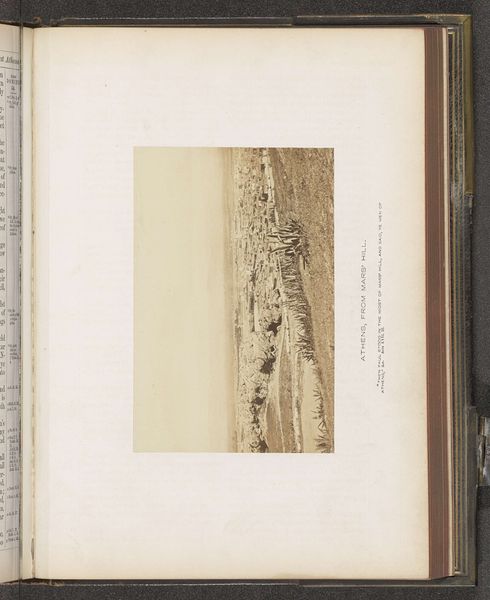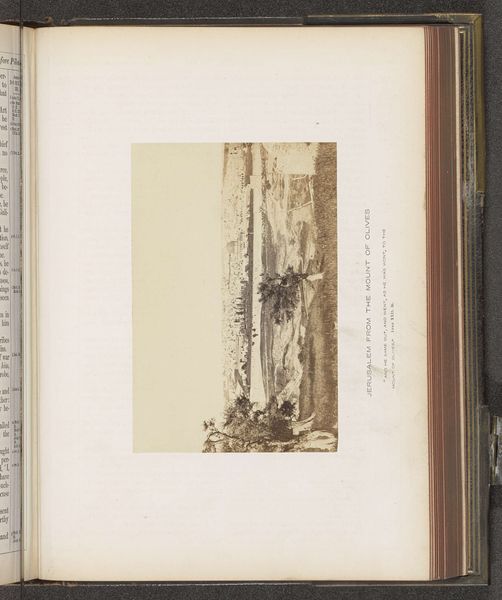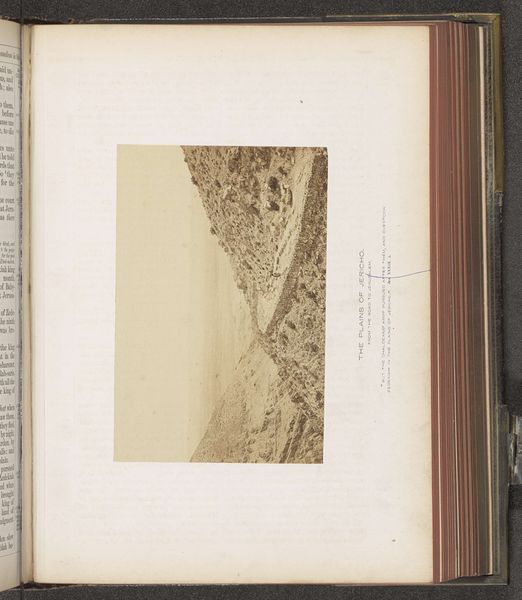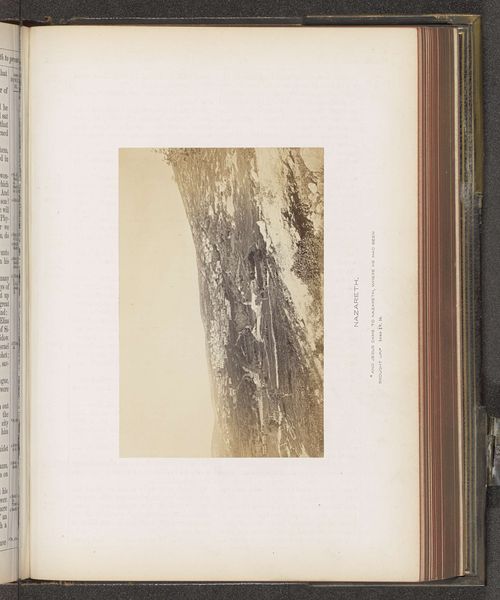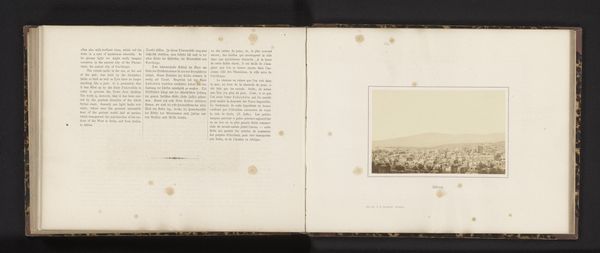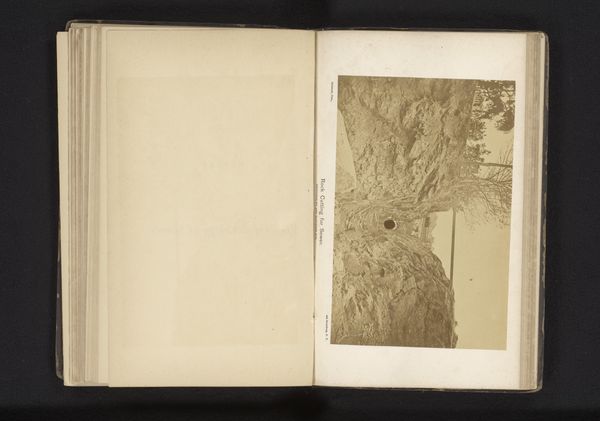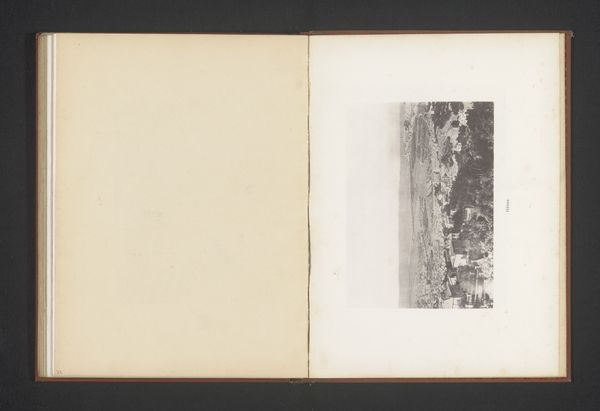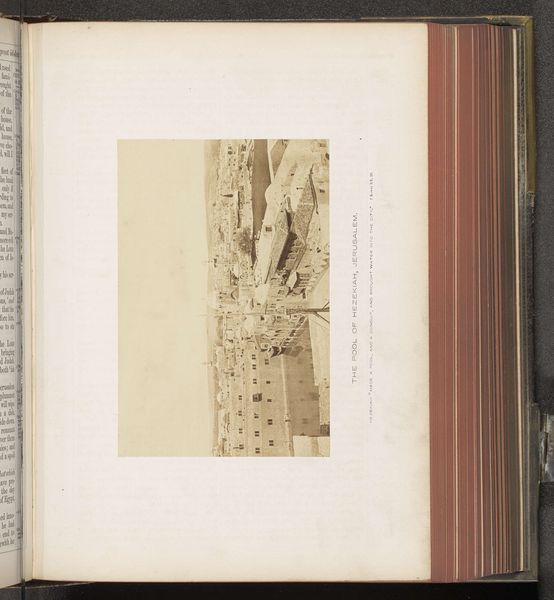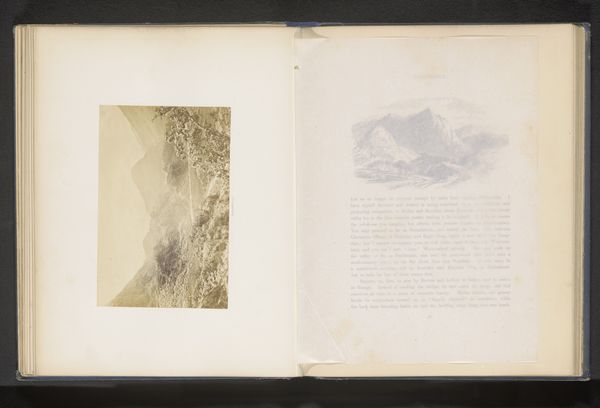
print, photography, albumen-print
# print
#
landscape
#
ancient-egyptian-art
#
photography
#
ancient-mediterranean
#
orientalism
#
watercolor
#
albumen-print
#
realism
Dimensions: height 104 mm, width 157 mm
Copyright: Rijks Museum: Open Domain
Curator: This is Francis Frith's "Gezicht op de Piramide van Cheops," taken sometime between 1850 and 1865. It's an albumen print, a key process in early photography. Editor: My first impression is how bleached it looks. The image is dominated by pale tones, giving it a ghostly, ethereal quality. Almost dreamlike. Curator: That's partly the albumen process. But consider Frith's agenda: he's presenting the sublime monument, Cheops pyramid, as an enduring emblem of civilization itself, despite the erosions of time and climate. The blank sky makes a statement, right? Editor: Precisely. The pyramid symbolizes something permanent against the supposed nothingness of nature, a common 19th-century trope, with Europe using ancient imagery for cultural imperialism and exoticizing. Note the single, shadowy figure present. It shows not life as it is for many, but of a single person in front of a great work. Curator: Right. Also, he positions it carefully. Notice how the sun bleaches and lightens parts of the image so the focus falls primarily to the structure's great magnitude. What’s impressive about Frith's work is how he infuses this imperial gaze with a genuine reverence, like documenting this ancient site before further degradation. The symbolism is strong: human innovation and culture dominating its setting. Editor: Absolutely. Frith, through his photographic lens, actively shapes and memorializes his own narrative that fits squarely into his audience. What is highlighted, what is cut from the image? I suspect many more laborers and farmers are surrounding the pyramid, and by only placing the figure, an explorer, Frith pushes that orientalist message home. Curator: The sepia tones lend the scene a romantic timelessness. Though it depicts a specific place and time, it transcends that. What really interests me, though, is this act of turning a landscape into a symbol—the pyramid reduced to its iconic, primal form through photography, and simultaneously imbued with the weight of colonial ambition. Editor: A fascinating encapsulation of a specific moment in history, one where image-making became integral to asserting power and control through cultural touchstones and signifiers. A picture is worth a thousand words… often deployed to establish, justify, or critique political and cultural domination, like many works of this period. Curator: Very well, that certainly gives much pause for further examination of this important early photograph. Editor: Indeed, something to meditate on considering art history’s complicated connections with the real world.
Comments
No comments
Be the first to comment and join the conversation on the ultimate creative platform.

